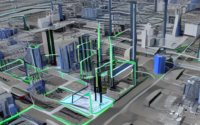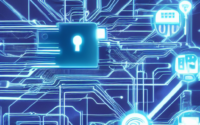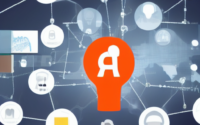Using Digital Twins to Test Smart City Infrastructure
Using Digital Twins to Test Smart City Infrastructure
Introduction to Digital Twins:
Digital twins are virtual replicas of physical objects, processes, or systems that can be used for various purposes, such as monitoring, simulating, and optimizing performance. In the context of smart city infrastructure, digital twins play a crucial role in testing and validating new technologies and solutions before deployment in the real world.
Benefits of Using Digital Twins in Smart Cities:
1. **Risk Reduction:** Digital twins enable city planners and engineers to identify potential risks and issues in the infrastructure design phase, reducing the likelihood of costly errors during implementation.
2. **Cost-Effective Testing:** By simulating real-world scenarios in a virtual environment, digital twins allow for cost-effective testing of different solutions and configurations without the need for physical prototypes.
3. **Optimization of Resources:** Digital twins help in optimizing the allocation of resources by providing insights into the performance of infrastructure components and systems under various conditions.
4. **Data-Driven Decision Making:** By collecting and analyzing data from the digital twin models, city officials can make informed decisions based on real-time information and predictive analytics.
Creating a Digital Twin for Smart City Infrastructure:
1. **Data Collection:** The first step in creating a digital twin for smart city infrastructure is to collect data from various sources, including sensors, IoT devices, GIS data, and historical records.
2. **Modeling and Simulation:** Once the data is collected, it is used to create a digital representation of the physical infrastructure, including buildings, roads, utilities, and other components. Simulation software is then used to simulate the behavior of the infrastructure under different scenarios.
3. **Integration of IoT and AI:** To enhance the capabilities of the digital twin, IoT devices are integrated to collect real-time data, while AI algorithms are used for predictive analytics and optimization.
4. **Validation and Testing:** The digital twin is tested and validated against real-world data to ensure its accuracy and reliability in representing the actual infrastructure.
Applications of Digital Twins in Smart City Infrastructure:
1. **Traffic Management:** Digital twins can be used to optimize traffic flow, predict congestion, and improve the efficiency of transportation systems in smart cities.
2. **Energy Management:** By simulating energy consumption patterns and optimizing the use of renewable energy sources, digital twins help in reducing carbon emissions and increasing energy efficiency.
3. **Public Safety:** Digital twins enable city officials to model and simulate emergency response scenarios, improving coordination and decision-making during critical situations.
4. **Urban Planning:** City planners can use digital twins to test different urban development scenarios, assess the impact of new construction projects, and ensure sustainable growth.
Challenges and Considerations:
1. **Data Privacy and Security:** The use of digital twins involves the collection and storage of large amounts of sensitive data, raising concerns about privacy and cybersecurity risks.
2. **Interoperability:** Ensuring compatibility and seamless integration of different systems and technologies used in creating digital twins can be challenging, requiring standardized protocols and data formats.
3. **Scalability:** As smart city infrastructure grows and evolves, scalability becomes a key consideration, requiring flexible and adaptive digital twin models.
4. **Skill Gap:** Building and managing digital twins require specialized skills and expertise in data science, IoT, and simulation technologies, highlighting the need for training and capacity building.
Future Outlook:
The use of digital twins in testing smart city infrastructure is expected to continue growing as cities around the world embrace digital transformation to improve efficiency, sustainability, and resilience. Advancements in technologies such as 5G, edge computing, and artificial intelligence will further enhance the capabilities of digital twins, making them essential tools for designing and managing the cities of the future.



